
1. Sattu :
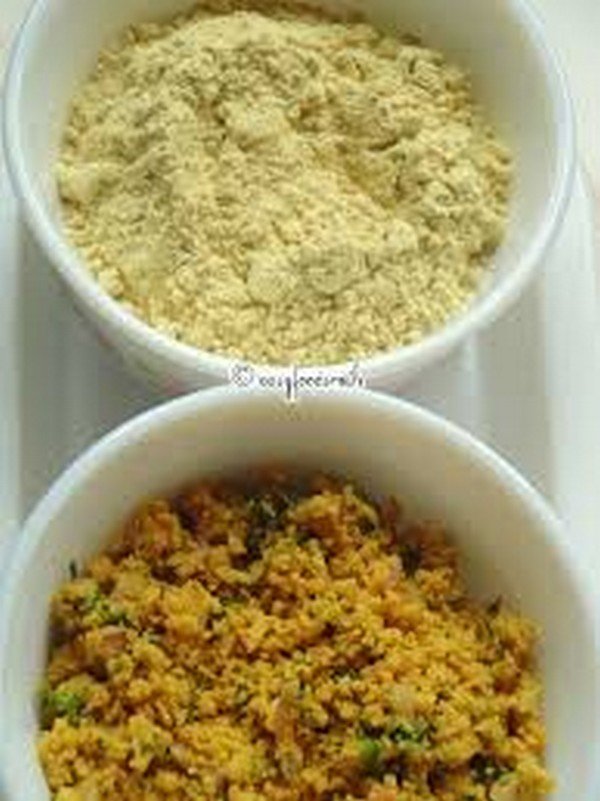
Sattu is a foodstuff in South Asia consisting of a mixture of ground pulses and cereals. The dry powder is prepared in various ways as a principal or secondary ingredient of dishes. It originated in Bihar, India but is popular over a wide area of India and Pakistan.Sattu is the basis of several dishes. It is commonly served cold for breakfast as a porridge or soft dough. Sweet dishes combine sattu with fruit slices, sugar and milk. In savoury dishes sattu may be flavored with green chili, lemon juice and salt. It is a popular stuffing in parathas.powdered baked gram, a high energy giving food usually mixed with water or with milk. Sometimes, sattu mixed with spices is used to prepare stuffed chapattis, locally called as makuni roti.
2. Chokha :
It has been in wide use among Georgians from the 9th century until the 1920s, The trend of Chokha in Georgians still continue to occur as they see it as their proud cultural heritage they inherit till this day. France may be known for its berets, and Spain for its mantillas, but few national costumes are linked to as strong a sense of national pride as Georgias Chokhas. Nearly every Georgian household has photos of ancestors adorned in chokhas. Once a symbol of resistance to Bolshevik Russias 1921 takeover of an independent Georgia, the chokha has now come to represent a Georgia reborn, a country that revels in its cultural individuality. Increasingly worn by Georgian men at weddings and official functions, the eye-catching garb is finally experiencing a comeback in Georgia. The Chokha revival is taking place in parallel with a resurgence of interest in other mainstays of Georgian culture
3. Naan :
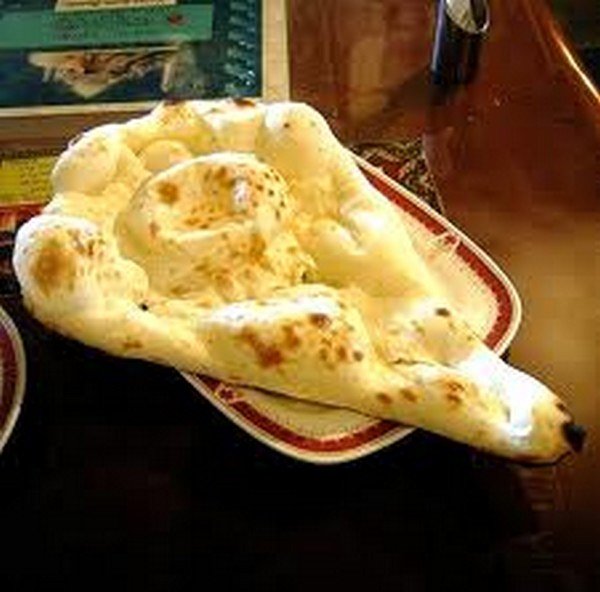
Naan or nan or khamiri is a leavened, oven-baked flatbread.It is typical of and popular in West, Central and South Asia.The most familiar and readily available varieties of naan in Western countries are the South Asian varieties. In Iran, from which the word ultimately originated, n?n not carry any special significance, as it is merely the everyday word for any kind of bread. Naan in other parts of South Asia usually refers to a specific kind of thick flatbread (another well-known kind of flatbread is chapati). Generally, it resembles pita and, like pita bread, is usually leavened with yeast or with bread starter (leavened naan dough left over from a previous batch); unleavened dough (similar to that used for roti) is also used. Naan is cooked in a tandoor, from which tandoori cooking takes its name. This distinguishes it from roti, which is usually cooked on a flat or slightly concave iron griddle called a tava. Modern recipes sometimes substitute baking powder for the yeast. Milk or yogurt may also be used to impart distinct tastes to the naan. Milk used instead of water will, as it does for ordinary bread, yield a softer dough. Also, when bread starter (which contains both yeast and lactobacilli) is used, the milk may undergo modest lactic fermentation.
4. Aloo paratha :
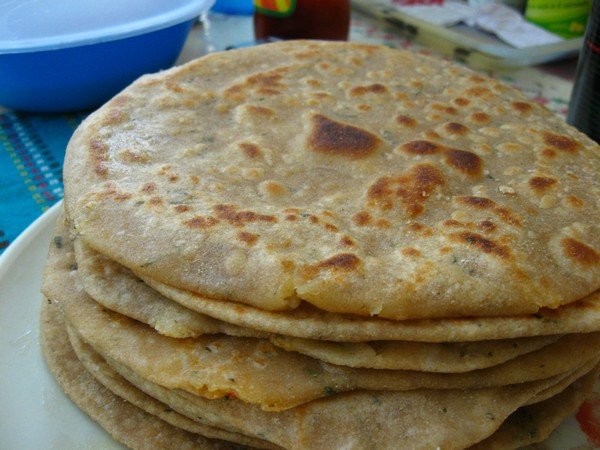
Aloo Paratha is an Indian recipe and one of the most popular breakfast dishes throughout western, central and northern regions of India. Aloo (potato) stuffed Parathas are basically unleavened dough stuffed with a spiced mixture of mashed potato, which is rolled out and cooked on a hot tawa with butter or ghee. Usually butter or chutney is served with Aloo Paratha and in rural parts of northern and western India, lassi is served along with it.
5. Balushahi :

is a traditional dessert in northern Indian Cuisine, Pakistani Cuisine, Nepali cuisine and Bangladeshi cuisine. It is similar to a glazed doughnut in terms of ingredients, but differs in texture and taste. In South India, a similar pastry is known as Badushah.
6. Paratha :
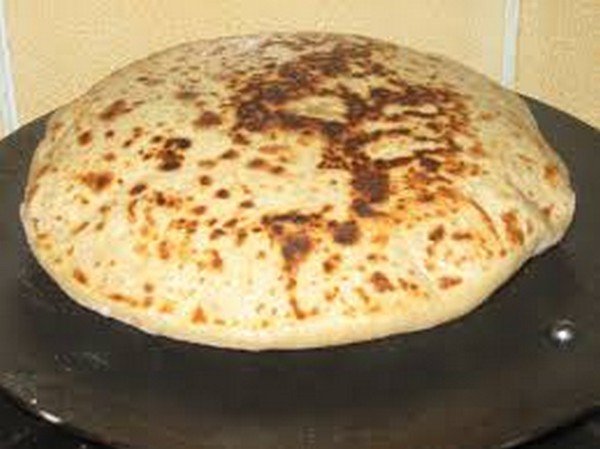
A paratha/parantha/parauntha is a flatbread that originated in the Indian Subcontinent. It is still quite prevalent throughout the area. Parantha is an amalgamation of the words parat and atta which literally means layers of cooked dough. In Burma, it is known as palata while it is known as farata in Mauritius and the Maldives. However, in areas of the Punjabi region, it is referred to as prontha or parontay.It is one of the most popular unleavened flat breads in the northern part of the Indian subcontinent and is made by pan frying whole wheat dough on a tava. The parantha dough usually contains ghee or cooking oil which is also layered on the freshly prepared paratha. Paranthas are usually stuffed with boiled potatoes (as in aloo ka parantha), leaf vegetables, radishes, cauliflower, and/or paneer (Cottage-cheese). A parantha (especially a stuffed one) can be eaten simply with a pat of butter spread on top, with chutney, pickles, and yogurt, or with meat or vegetable curries. Some roll the parantha into a tube and eat it with tea, often dipping the parantha.
7. Kachori :
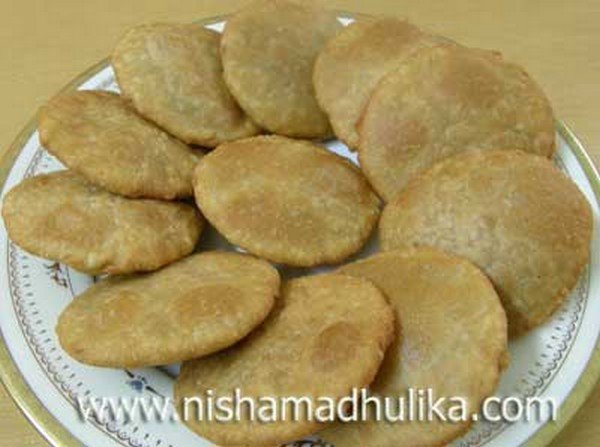
Kachori is supposed to have originated in Uttar Pradesh or Rajasthan.[citation needed] In these states it is usually a round flattened ball made of fine flour filled with a stuffing of baked mixture of yellow moong dal or Urad Dal (crushed and washed horse beans), besan (crushed and washed gram flour), black pepper, red chili powder, salt and other spices. Additionally in Rajasthani cuisine, the Pyaaj Kachori (onion kachori) is very famous. Another form of Kachori which is famous in Rajasthan is the Mawa Kachori. It is a sweet dish which is dipped in sugar syrup. In Gujarat, it is usually a round ball made of flour and dough filled with a stuffing of yellow moong dal, black pepper, red chili powder, and ginger paste.In Delhi it is often served as a chaat. Also Delhi has another kind of kachori, called Khasta kachori or Raj Kachori.

